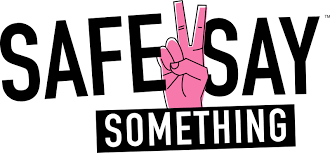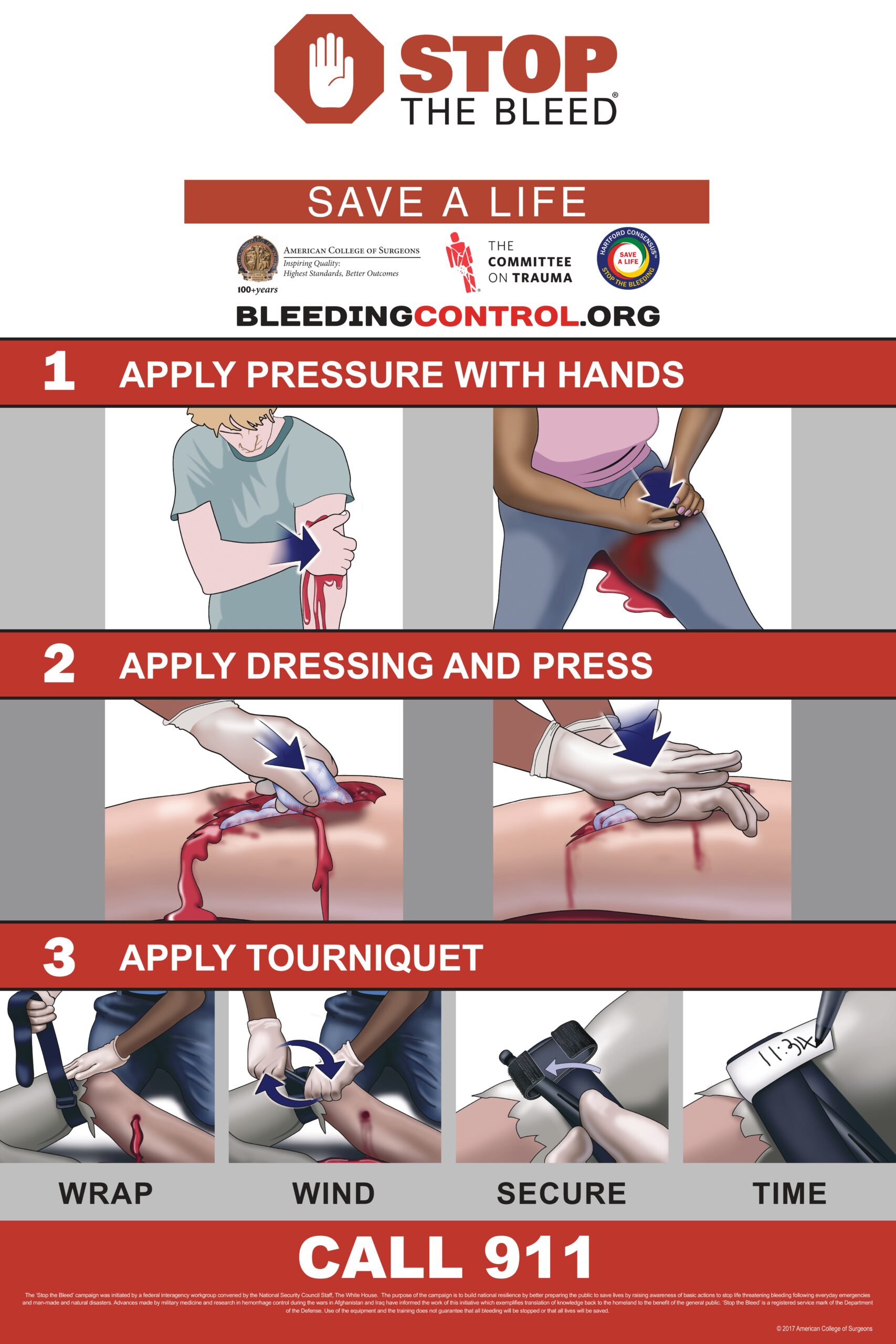Safety & Security Resources
The Carbondale Area School District is dedicated to providing a healthy, safe, and secure learning environment for all students, staff, and visitors. The safety and welfare of our students and staff is our top priority.
Administrators meet regularly to ensure effective emergency operations planning. While no system is entirely fail-safe, we believe the following precautions help create a safe environment:
· All building doors are locked during the school day. Visitors must identify themselves and state their purpose to office personnel before being permitted entry. Although this may seem inconvenient at times, it is crucial for knowing everyone who enters our schools.
· All staff members are required to wear identification badges for easy recognition. Visitors must sign in at the office and wear a Raptor visitor identification badge or sticker.
· District and building administrators are present in schools and at extracurricular events.
· Students and staff participate in safety drills throughout the year to ensure preparedness in case of a crisis.
· Teachers, support staff, and administrators on the crisis or Safe Crisis Management team receive professional training.
· The District conducts Risk and Vulnerability Assessments to identify areas for safety improvement, with the last assessment completed on December 1, 2022.
· The District has an Emergency Operations Plan based on the National Incident Management System model, which is reviewed quarterly by administration.
· The Coordinator of Safety, Dr. Colleen Sullivan, is ALICE trained, offering expertise in active shooter preparedness and other emergency measures.
· Staff remain vigilant in monitoring guests entering our buildings. If they observe someone without District-authorized identification, they are instructed to question the individual’s presence and escort them back to the office.
Run, Hide, Fight Information
Some important information regarding the drills:
· Student training includes practicing the hide portion of Run, Hide, Fight.
· At the elementary level, staff will discuss Run, Hide, Fight with students. · At the middle schools and high schools, students will watch the YouTube video SAUSD Run Hide Fight (Elementary School), which highlights all three of the elements of the Run, Hide, Fight approach and allow time for discussion.
· In all schools, the drill begins with the announcement “This is a drill. This is a drill. This is a drill.” and ends with the announcement “The drill is now over. Resume normal operations.”
· Following the drill, parents may receive an informational Remind from their building principal to notify them that the drill was conducted.
The purpose of any drill is to enhance our capacity to protect students. Although students and staff know a drill will take place, we are not disclosing the exact date and time. This approach allows us to more effectively assess our emergency preparedness plans and refine our response skills.
If you have any questions, please contact your building principal or Dr. Colleen Sullivan, Coordinator of Coordinator of Safety at colleen.sullivan@carbondalearea.org or 844-330-2273.
In 2018, the General Assembly enacted Act 44, which requires all Pennsylvania school entities to implement the “Safe2Say Something” (S2SS) anonymous reporting system by January 14, 2019.
Safe2Say Something is a youth violence prevention initiative managed by the Pennsylvania Office of Attorney General. This program educates both youth and adults on recognizing warning signs and signals, particularly on social media, from individuals who may pose a threat to themselves or others, encouraging them to “say something” before it’s too late.
THREE WAYS TO SUBMIT AN ANONYMOUS TIP:
- Call the tipline: 1-844-SAF2SAY (1-844-723-2729)
- Use the website: https://www.safe2saypa.org
- Use the mobile app available in iOS and Android stores
HOW IT WORKS:
1. Submit an anonymous tip through the Safe2SaySomething system.
2. The crisis center reviews, assesses, and processes all submissions.
3. The crisis center forwards submissions to school administration and/or law enforcement for intervention.
4. The school and, if necessary, local law enforcement assess the situation and intervene with the at-risk individual.
5. If needed, the crisis center may contact the tipster anonymously via the app.
For a comprehensive list of Frequently Asked Questions, please visit https://www.safe2saypa.org/faq/.

The Carbondale Area School District has implemented a visitor management software program called Raptor’s Visitor Safe Management in each of its buildings. Starting with the 2020-2021 school year, all visitors are required to present a valid driver’s license or another state-issued ID upon entering a school or the administration center. This ID will be scanned and checked against the sexual offender database. Protocols are in place for those without a state-issued ID.
Visitors who pass the check will receive a printed ID badge featuring their photo and name. The badge is self-expiring; within 12 hours, a red stop sign will appear, preventing reuse.
The entire process of scanning an ID, running the check, and printing a badge takes approximately 30 seconds. Key passes for frequent visitors will be available at a later date for those who visit the school regularly.
In the Carbondale Area School District, staff members receive training in “Stop the Bleed” facilitated by Mrs. Cori Wright.
Uncontrolled bleeding can result from both natural and manmade disasters, as well as everyday accidents. By equipping bystanders with essential tools and knowledge on how to take simple steps to stop life-threatening bleeding in emergencies, we can save lives. Just like CPR and the use of automatic defibrillators, increasing public awareness about how to manage severe bleeding can make a critical difference in the outcome for an injured individual.
School officials have the authority to lawfully search students or their belongings, including lockers, automobiles, electronic devices, purses, backpacks, clothing, and other possessions, without a warrant, when in school, on school grounds or when otherwise under school supervision, if there is a reasonable suspicion that the place or thing to be searched contains prohibited contraband, material that would pose a threat to the health, safety and welfare of the school population, or evidence that there has been a violation of the law, Board policy, or school rules under Board Policy #226. The scope and extent of searches must be reasonable in relation to the nature of the suspected evidence, contraband or dangerous material and to the grounds for suspecting that it may be found in the place or thing being searched.
The District has a compelling interest in protecting and preserving the health, safety and welfare of the school population, which under certain circumstances may warrant general or random searches of students and their lockers, vehicles or other belongings without individualized suspicion, for the purpose of finding or preventing entry onto school property of controlled substances, weapons or other dangerous materials.
Canine Searches
Canine searches serve as a preventative measure that underscores our commitment to eliminating drugs and other controlled substances from our schools. During the search, students and staff will enter a non-emergency lockdown, limiting access to and from campus.
Typically, these searches involve canine units, supervised by their police officer handlers, sniffing common areas such as hallways, lockers, and parking lots to detect illicit substances. The searches are non-invasive and do not involve any physical contact with students.
In addition to any criminal charges that may be filed by law enforcement, individuals found in possession of prohibited items during the search will face disciplinary consequences. The District’s policy is to withhold specific disciplinary information following a search.
The Carbondale Area School District has the authority to deny entry to any individual and may restrict visitors to designated areas or limit the number of visitors as needed to ensure the health and safety of students, staff, and the public under Board Policy #907. There may also be times when schools are closed to visitors due to security concerns or emergency situations.
Guidelines
- Persons wishing to visit a school should make arrangements in advance with the school office in that building.
- Upon arrival at the school, all visitors, including Board members on Board business, must register at the office where they must provide any required information or identification to protect the health and safety of students, staff and the school community, as well as sign in and sign out, receive a pass, receive instructions and be informed of the school’s health and safety rules, which must be followed prior to entry and while the visitor is in the school building and on school property.
- Only one (1) designated entrance that is monitored and capable of controlling visitor entry shall be used by visitors to the school. All other entrances shall be locked.
- All staff members shall be responsible for requiring a visitor demonstrate that the visitor has a visitor’s pass and has registered at the school office and received authorization to be present for the purpose of conducting business.
- No visitor may confer with a student in school without the approval of the building principal.
- Should an emergency require that a student be called to the school office to meet a visitor, the building principal or designee shall be present during the meeting.
- Failure to comply with this policy shall result in more limited access to the school as determined by the building principal, consistent with Board policies, administrative regulations, school rules and federal and state law and regulations.
Classroom Visitations
- Parents/Guardians may request to visit their child’s classroom, but the request must be made prior to the visit, in accordance with established administrative regulations.
- The building principal or program supervisor must grant prior approval for the visit, and shall notify the classroom teacher prior to the visit.
- Parents/Guardians shall be limited to one (1) class period per month, per child in the school for classroom visitations, in order to minimize disruption of the classroom schedule and the educational program. Parental participation in classroom activities or programs such as room parents, back-to-school events, and chaperones for field trips shall not constitute a classroom visit for purposes of this policy.
- The building principal or program supervisor and classroom teacher have the authority to ask a visitor to leave if the visitor disrupts the classroom routine, educational program or daily schedule, or if a visitor violates Board policy. Failure to leave when asked or repeated, documented disruptions may result in loss of classroom visitation privileges.
- Under exceptional circumstances and upon request of the building principal, program supervisor, classroom teacher or parent/guardian, the Superintendent may authorize additional or longer classroom visits by a parent/guardian.
Military Personnel
Members of the active and retired Armed Forces, including the National Guard and Reserves, shall be permitted to:
- Visit and meet with district employees and students when such visit is in compliance with Board policy and district procedures.
- Wear official military uniforms while on district property.
Supportive services in our schools can include a variety of programs and services that help students succeed academically, emotionally, and physically.
Mental Health/SEL Services at Carbondale Area School District
| Service | Grades Served | Level of Service | Eligibility |
| CSBBH
Community School-based Behavioral Health |
K-6 FSH (Friendship House) Team
(2 MHP, 5 MHW) |
High level of Mental health service- range of services- individual, group, family, crisis intervention, behavior management | Needs MA insurance |
| Intensive Outpatient Counseling | 7-10th FSH
|
High level of mental health service- see therapist weekly/bi-weekly; step up from the out-patient- depression, substance abuse | Needs MA insurance |
| Outpatient Counseling | K-12 FSH
|
Entry level of mental health service | Needs medical insurance of some type |
| School-based Therapy | K-12
|
Group and individual services;
School counseling; onsite services; Moderate level of school service |
CAAP students and other district students eligible |
| Social Worker | K-12 | Entry level school counseling; provide counseling, helps parents get needed services- an advocate | All District students |
| Behavior Specialist | K-12 | Moderate behavioral services; provides teachers and students with strategies on handling challenging behaviors, does assessments, sets up action plans | All District students |
| Guidance Counselors
2 elementary 2 high school |
K-12 | Entry-level services;
Crisis intervention and screening services |
All District students |
For additional information regarding these services, please contact your child’s school counselor.
Elementary School:
Jr./Sr. High School:
- Megan Ruggiero– Director of Guidance
- Keri Warhola
The Carbondale Area School District established a Threat Assessment Team. Threat assessment is a preventive strategy. The team meets regularly to identify student threats before they become acts of violence. The team is made up of administration, school counselors, behavioral health professionals, school security, special education members, and other individuals with expertise who can assist with threat assessment process.
This program helps students overcome barriers to learning, such as mental health issues, alcohol, tobacco, and other drugs.
Anyone can refer a student to SAP when they are concerned about someone’s behavior: any school staff, a student’s friend, a family member or community member. The students themselves can even go directly to the SAP team to ask for help. The SAP team contacts the parent for permission to proceed with the SAP process.

Schools are a key setting for suicide prevention and the District has policies and procedures for suicide prevention with Board Policy # 819. All district employees, including but not limited to administrators, teachers, paraprofessionals, secretaries, coaches, bus drivers, custodians and cafeteria workers, shall receive information about risk factors, warning signs, response procedures, referrals, and resources regarding youth suicide awareness and prevention.
Resources:
National Suicide Prevention Lifeline
1-800-273-8255
Children’s Rights of America Youth Crisis Hotline
1-800-442-4673
Suicide Prevention Resources for Schools
PA Youth Suicide Prevention Initiative
Talk to:
- Parents
- Friends
- Counselors
- Coaches
- Clergy
Visit:
- Emergency Room
Suicide Warning Signs:
- Talking about wanting to die or killings oneself.
- Looking for ways to commit suicide.
- Collecting items to commit suicide.
- Talking about feeling hopeless.
- Talking about having no reason to live.
- Talking about being trapped or in unbearable pain.
- Talking about being a burden to others.
- Increased use of drugs or alcohol.
- Acting anxious or agitated.
- Behaving recklessly.
- Sleeping too little or too much.
- Withdrawing or feeling isolated.
- Showing rage or talking about seeking revenge.
- Extreme mood swings.
(adapted from Department of Health & Human Services)
If you’re concerned that someone is thinking about suicide call 9-1-1.






